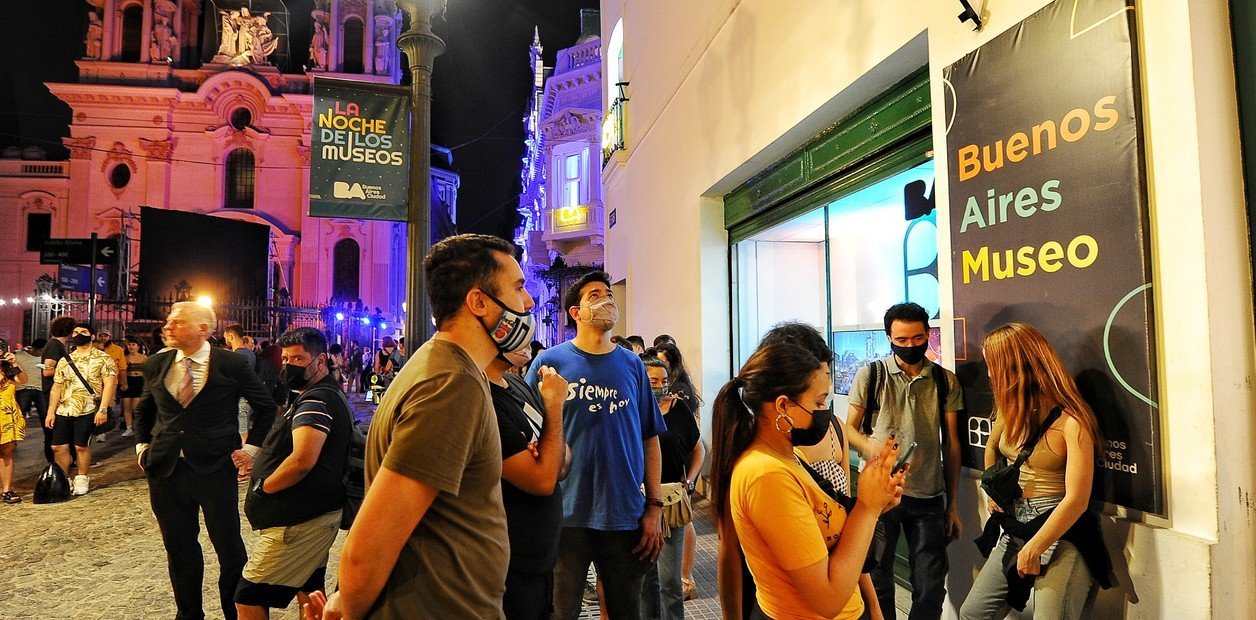Balance Sheet 2021. Museums in an era of definitions

Written by March Mazzei, and originally pubished by clarín.com, 17 December 2021.
If, during 2020, museums were forced to demonstrate their essential character - why did they have to remain closed while other spaces were being opened? - they have since assimilated more changes. The pause that had inspired a renewed reflection on heritage, and generated successful exhibitions with the collection itself as an input, also led to debates on the social value of the institutions. From xenophobia, its link with the community, and its permanence in a new world, the changes of 2021 continue in that direction.
Malba, which celebrated its 20th anniversary in September with events and acquisitions, had already planned a new script for its collection when the pandemic broke out. But several of the new questions found valuable answers in the pieces of art of the original peoples, now contemplated and exhibited. Due to its decentralized design, simultaneously in different geographies, the Bienalsur inaugurated in Salta last July was able to adapt to the changing rules of the world, consolidating itself as a space for analysis.
While Fundación Proa took another of the tendencies of this era to its apex: the local production of international exhibitions, based on instructions. This was the condition of possibility for La Suite. Looks at works and artists from the FRAC collection, from July to December in La Boca. This same complicity made possible the presence of Latin America in the pandemic edition of ARCOmadrid, by the Argentinean curator Mariano Mayer.
The Reina Sofía Museum was one of those that remixed the pieces. In September, it inaugurated new rooms dedicated to the birth of the avant-garde, with a focus on the link with Latin America. The Argentinean Ana Longoni promoted this horizon from her position as Director of Public Programmes. She has just resigned to return to Argentina; the contact, however, will continue to live on. The Museo del Prado, also in Madrid, has been revising its holdings. In October, it opened the first major exhibition of Viceroyal art, with around 100 unknown pieces, mostly religious, representing the cultural exchange between the two sides of the Atlantic, which was widely celebrated.
During its latest seminar, the International Committee of Museums and Collections of Modern Art (CIMAM) focused on combating discriminatory tendencies in an increasingly divided world and the climate crisis. Part of this group is the Museo de Arte Moderno de Buenos Aires, which in recent months has made progress with a program linked to diversity and inclusion - with an exhibition of artists from a workshop with street people. An exhibition with 34 artists connected to their environments of origin in all the provinces highlighted another of the trends: the federalization of the art system.
n 2021, the Louvre appointed a woman director, Laurence des Cars, for the first time in its 228-year history. It also opened a new museum in Paris, that of the collector François Pinault at the Bourse de Commerce. Buenos Aires saw the birth of the Andreani Foundation space, now in full activity. It ends the year with the closing of FOLA, the emblematic space dedicated exclusively to photography, which leaves its rooms in Distrito Arcos de Palermo to travel around the country in a trailer.
Decolonised gazes with different impetus and approaches crossed the calendar and the planet, from the demolition of monuments to the return by the Met Museum in New York of three pieces of the so-called "Benin Bronzes" to Nigeria. Unesco recommended that the Parthenon marbles be returned to Greece. The challenge for each museum is to take action beyond symbolic gestures.
Meanwhile, an overwhelming public response to La Noche de los Museos, which was replicated in several cities across the country at the end of October, was evidence of this wave of love for the analog, for the valuable time that visitors gratefully gave back to the experience of enjoying art.